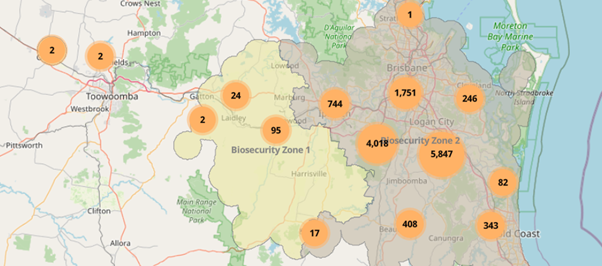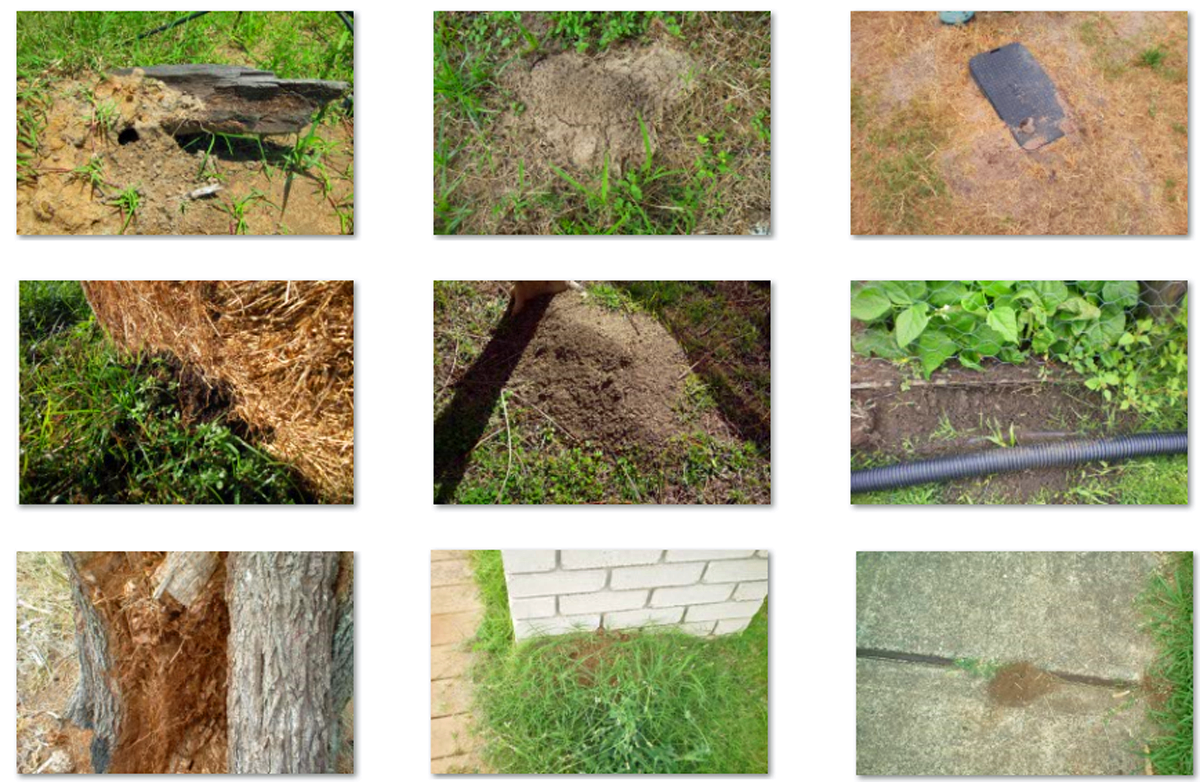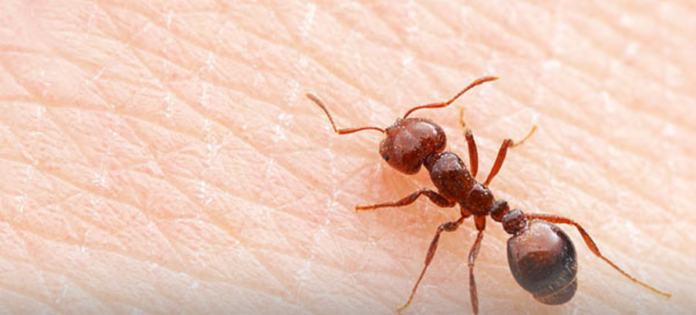They say everything in Australia is out to harm you…well, let’s add fire ants to that list. The march north of this invasive and dangerous plague has been a major problem in Queensland’s southeast since 2001. Back when they first arrived on our shores, isolated nests were discovered near Gladstone but an aggressive eradication campaign kept the outbreak at bay. South East Queensland wasn’t so successful. Fire ants have plagued Brisbane’s south and southwest for years, but the spread “north of the river” is causing alarm. In the last 12 months, Fire Ant nests have been discovered as far north as the Southern Sunshine Coast and west to Toowoomba.

Image Credits: National Fire Ant Eradication Program
How do I know if there are fire ants on my property?
Most fire ant infestations have been found by trained inspectors because they’re a bit tricky to identify. If in doubt, get it checked out.
- Nests look like a small mound of disturbed soil. Depending on your soil type and the size of the nest, the nests appear very different.
- They’re not fussy. They can nest in scrub, open grassland, in decaying trees, under concrete. They’re tricky.
- Fire ants resemble other common Queensland ants. They’re reddish brown, or coppery and may have a “darker bum”.
- They’re smaller than you assume. They’re just 2-6mm long. Smaller than the other common reddish brown ants.
- Fire ants are very efficient. If you disturb a nest, they’ll pack up and relocate quickly. They can cross rivers. They can hitch a ride in a hay bale or a pot plant. They can spread around 50kms per year if unmonitored.

What do you do if you suspect you have firey houseguests?
You’re legally obliged to report fire ants immediately. Do not touch the nest. Not only will they take this as a trigger to spread (possibly to another part of your yard) but their sting is described as “feeling like your whole body is on fire”. Fire ant bites can cause anaphylactic reactions in people who previously had no issues with severe allergies. They’re nasty little blighters. Let’s be clear. Do not touch the nest. Instead report your suspicions immediately or get a certified fire ant pest controller out to confirm and eradicate on the spot.
“Different species of ants respond to different extermination methods. What works for black ants won’t work for other species. Fire ant eradication requires a method called direct nest injection of a chemical called Fipronil – your fly spray won’t kill them, it will just make them VERY, VERY CROSS.”
– Keith Jacobs, certified fire ant exterminator, north Brisbane.
Queensland’s biosecurity agencies are urging residents to check their yards for signs of fire ants and report the infestation. Even if you’re not in the South East, keeping an eye peeled could stop the spread of these nasty creatures across our state, joining rabbits and cane toads on the list of living, breathing environmental disasters.





